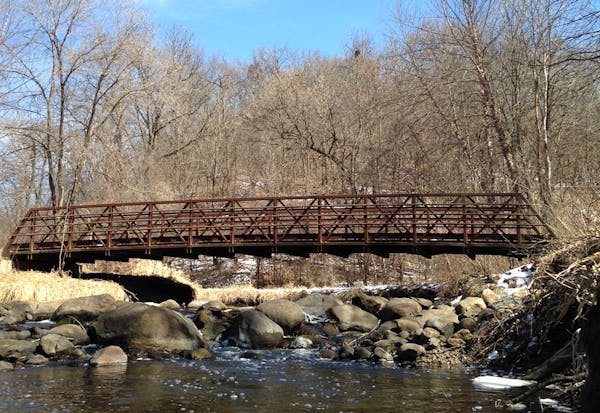History suggests that in March and early April when the eagles and Canada geese and sandhill cranes return north, activity in the sugar bush picks up. Certainly this was true for the Chippewa, the Dakota and the Cree. Then, as today, sweetness was the attraction, and the Native Americans used hollowed sumac or cedar stems to tap their maples, allowing the sap to flow, drip by drip, into containers crafted of birch bark.
Early Thursday morning, on a bluff high above the St. Croix River, history replayed itself. Canada geese were airborne, and soon also cranes and eagles and a skein of tundra swans. The day had broken overcast, but soon expanding patches of blue gathered overhead, revealing a warm morning sun. This was before John Miller, John Weyrauch or I had placed a fire in the cooker, and before we began to fill a very large aluminum pan with maple sap.
Our intent was to boil some 425 gallons of the stuff, reducing this quantity to a fractional amount of syrup that might measure 12 gallons. This process would take perhaps 2½ days, boiling day and night, with cut, split and dried oak providing the BTUs. That no immediate gratification would be achieved was part of the attraction.
Time is most poignantly measured by the comings and goings of friends and family, and this is the first spring that at least one of my two sons isn't on hand to help make syrup. Both are away at college. But when they were younger, in the wet, snowy Marches of yesteryear, they enjoyed checking for the first drippings from our maples. Afterward, when the sap ran, they savored also collecting it tree by tree into a tank we strapped onto our four-wheeler. When a match was finally struck and a fire built in our cooker, the boiling could drag on; the boys had school and rarely pulled an overnight shift around the fire. But when the sap was finished into syrup we, along with their mother, drizzled sacramental portions of the delicacy over ice cream, a springtime communion of our own making.
This syruping season is also different for Lon Navis, our neighborhood's granddaddy of all things maple. Lon's wife, Karin, passed away in the last year, and for the past couple of weeks, Lon has been on a road trip to California with his grandkids, seeing Yosemite and the big redwoods. This left only a ragtag bunch of us, headed by the two Johns, to put up a year's worth of syrup. Absent such an effort, our pancakes would go wanting for proper glazes, and the pecans that dress up my wife's salads would not be so delicately caramelized.
We got a fire going, and John Miller recounted how this was his 40th anniversary of syrup-making at this location, on the divide between Lon's property and the home site belonging to John's mother, Marilyn. That's a lot of history, 40 years, a lot of wood up in smoke and water boiled off. Usually John's brother, George, puts a shoulder to this wheel as well. But he couldn't make it this year, and John, John and I knew we had little time to dawdle if, as we hoped, we were going to filter the last of our syrup before Easter sunrise.
So it is with traditions, and the older you get, the more you cling to them, and they to you. Cash or credit, bottles of maple syrup can be purchased. But there's something to be said in this season that bridges winter and summer for brewing your own hooch, as it were, just as there is for planting a garden, hunting for morel mushrooms or rising early to match wits with a tom turkey.
Always the temptation in this season and others is to indulge our lesser selves and kick back on a couch, remote in hand, and suffer a generation's worth of distractions. But this well-worn path is booby-trapped, and over time, life becomes a little less sweet, and it's difficult to pinpoint just why.
"I love waffles,'' John Miller said. "On a Saturday or Sunday, I'll make a big batch and freeze them, two to a bag. That way, even on a weekday when time is short, I can thaw a couple for breakfast and have them with my maple syrup.''
By early evening Thursday, as the sun's lower angle threw long shadows from bare-limbed trees, the fire in our cooker burned hot and hotter still. The sap boiled, and we wouldn't be leaving anytime soon, which was fine by us.
Dennis Anderson dennis.anderson@startribune.com

Anderson: Celebrate Earth Day by rekindling real connection to nature.
Anderson: Anglers protesting tough new Mille Lacs rules are wrong

Anderson: Courts, not politicians, should rule on Red Lake, White Earth lands

Anderson: Multimillion windfall gets invasive carp deterrent moving
![A young whitetail deer searches for food as another blanket of snow coats the arrowhead. ] Minnesota -State of Wonders, Arrowhead in Winter BRIAN PETE](https://arc.stimg.co/startribunemedia/WK32UWWY6FKNWJUIYCJ6ZPT4AU.jpg?h=91&w=145&fit=crop&bg=999&crop=faces)

